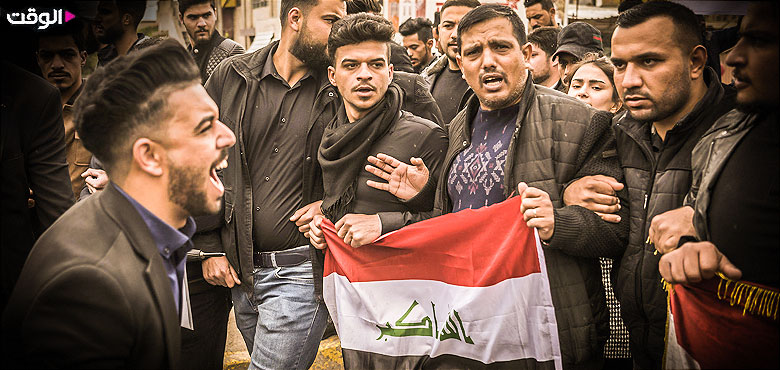Alwaght- Following the Iraqi parliament’s plan to expel the foreign forces from the country that focuses mainly on the American troops, the debate is warming up surrounding the political future of the country after the US withdrawal.
Meanwhile, the activism among main Iraqi groups and actors like the Shiites, Sunnis, and Kurds regarding the US military presence has increased considerably. On the one hand, the Iraqi public is unanimously against the American military presence in the country and on the other hand some of the Sunni and Kurdish leaders are concerned about the US pullout. They go against the people’s demands and call for the US to stay in Iraq.
Meanwhile, while the debate around the US forces expulsion warms further, some covert efforts by some Sunni politicians who are part of the Al-Banaa Coalition are started aiming to establish autonomous Sunni regions close to the Kurdish region in the north of the country. Reports say that recently a Sunni Iraqi delegation has met an American delegation in the UAE and discussed the project. The meeting reveals that the project is an American plot to split Iraq and thus repel the efforts to expel the American forces. The US struggles to set up a Sunni region with autonomy as Washington finds the new Iraqi developments and conditions against its interests and objectives.
But how implementable is this American plan? And what obstacles can it face? Before shedding light on the obstacles, we need to first bring in the spotlight the legal aspects of a possible move to establish a new region.
The legal mechanism for new autonomous region establishment
The Iraqi constitution brazenly supports the country being partitioned in federal regions. According to article 112, the federal system in the Republic of Iraq is made up of a decentralized capital, regions and governorates, and local administrations. Also, item 2 of article 113 emphasizes accepting the establishment of new regions, like the Kurdistan region, if it complies with the constitution and respects the legal conditions. “This Constitution shall approbate new regions established in accordance with its provisions,” it says. The article 115 in a more elaborate manner sets the mechanism for creating a new region.
Article115: One or more governorates shall have the right to organize into a region based on a request to be voted on in a referendum submitted in one of the following two methods:
A. A request by one-third of the council members of each governorate intending to form a region.
B. A request by one-tenth of the voters in each of the governorates intending to form a region.
All in all, the federalization of Iraq is supported constitutionally and ways are open to it. But here the question is that were the whole post-2003 border and territorial issues compliant with the constitution or it was the ground realities that have been decisive? Certainly, like in the past years, the constitution, especially when it came to creating Sunni regions or any other regions, has been influenced by the home political conditions and in the current situation it is unlikely that such issue gets chances of materialization because it only results in political and even tensions without any other outcomes.
What does the US seek behind a Sunni region?
Five goals drive the Americans to push the Sunnis toward an autonomous region:
1. Blocking the parliament bill to expel the American forces from the country.
2. Building pressure on the Iraqi politicians to dissuade their push for expulsion.
3. Pushing Iraq to further split: the Americans know that their interests can never be achieved in a united Iraq and that only in a state of split that they can turn the tide to their favor.
4. A Sunni region can help the US keep operating its Iraq bases, mainly the Ain Al-Asad airbase in the Sunni majority Al Anbar province.
5. Perpetuating the disputes and crises in the country. By encouraging the plan, the Americans want to bring the Sunni Arabs to the streets for support protests in a bid to deepen the inter-Iraqi gaps.
But the US is expected to face serious obstacles in the way of its plan and perhaps it will run into a failure. Here are the obstacles:
1. Just against the American imagination, the majority of the Iraqis are against the split of their country. Even some of the Kurds and a majority of the Sunnis do not want independence from Iraq.
2. The Iraqi politicians, including the Shiites, Sunnis, and Kurds, have never intended to create Sunni autonomy in the country. Perhaps a small number of politicians aspire for autonomy but Iraq split has a very low level of support and chance of realization among the Iraqis.
3. The rejuvenated will by the Shiite forces to expel the Americans from the country is a decisive factor. Upon the US assassination of General Qassem Soleimani, the powerful commander of IRGC’s Quds Force, and Abu Mahdi al-Muhandis, the deputy commander of Iraq’s Popular Mobilization Forces (PMF), Muqtada al-Sadr and PMF leaders made it clear that Jaish al-Mahdi (Mahdi Army) and PMF forces will not allow the Americans to continue occupation of Iraq. In the future, the American bases and troops can come under attacks if they insist on stay. Thus, with high certainty, the American plan for a Sunni autonomous region as part of the broader program to partition Iraqi can be deemed a failed one.



























